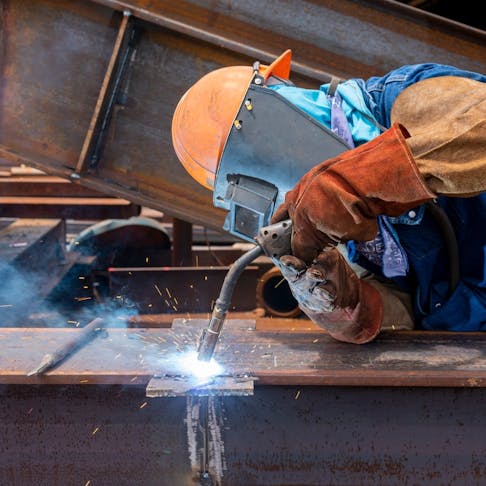Producing a Welding WPS: Step-by-Step Recommendations for Professionals
Producing a Welding WPS: Step-by-Step Recommendations for Professionals
Blog Article
The Ultimate Guide to Welding WPS Procedures: An Extensive Introduction for Welders
In the complex globe of welding, Welding Treatment Specifications (WPS) offer as the backbone of guaranteeing quality, consistency, and security in welding procedures (welding WPS). As we dig right into the numerous parts of a WPS and check out the intricacies of qualification and qualification, we will uncover the vital function these procedures play in the world of welding.
Value of WPS Procedures
Understanding the relevance of Welding Procedure Requirements (WPS) treatments is important for making sure the quality and stability of bonded structures. WPS procedures act as a roadmap for welders, outlining the needed steps, specifications, and materials called for to attain a sound weld. By sticking to WPS guidelines, welders can make certain uniformity in their work, bring about structurally sound and trusted welds.
Among the key reasons that WPS treatments are necessary is their function in maintaining weld quality and honesty. Complying with the defined welding parameters and strategies outlined in the WPS assists avoid defects such as porosity, splitting, or incomplete blend, which can jeopardize the toughness and durability of the weld. In addition, WPS treatments are critical for guaranteeing conformity with market requirements and codes. By following well established WPS standards, welders can show that their work fulfills the essential requirements for security and quality, giving assurance to clients, examiners, and governing bodies. In significance, the significance of WPS procedures can not be overemphasized, as they are fundamental to accomplishing constant, high-grade welds that fulfill industry criteria and specs.

Components of a WPS
A Welding Treatment Spec (WPS) generally makes up vital parts that information the specific needs for executing a weld, making sure uniformity and high quality in the welding procedure. The essential elements of a WPS include necessary variables such as base metals, filler steels, interpass and preheat temperature levels, welding processes, shielding gases, welding placements, and post-weld heat treatment demands.
Base steels refer to the products being signed up with, while filler steels are utilized to load the gap in between the base metals during welding. Preheat and interpass temperature levels are vital for controlling the warm input and stopping concerns like cracking or distortion. The welding process details the particular technique to be made use of, whether it's gas steel arc welding (GMAW), protected metal arc welding (SMAW), or an additional approach. Securing gases protect the weld swimming pool from atmospheric contamination. Welding placements define the orientations in which welding can be performed. Post-weld heat therapy may be essential to eliminate stress and anxieties and boost the weld's residential properties. A comprehensive understanding of these elements is crucial for producing a efficient and extensive WPS.

Qualification and Accreditation
Having actually developed the crucial elements of a Welding Treatment Spec (WPS), the emphasis now changes in the direction of the crucial elements of credentials and accreditation in welding methods.

Qualification, on the various other hand, is the formal acknowledgment of a welder's credentials by an appropriate qualification body or company. Welding certifications are commonly based on the details welding processes, materials, and placements a welder is certified to deal with. Holding a legitimate welding qualification demonstrates that a welder satisfies sector standards and is experienced to execute welding jobs to the required specs.
Developing a WPS
To establish a Welding Treatment Spec (WPS) that meets sector standards, cautious consideration of welding processes, materials, and operational specifications is necessary. The very first action in producing a WPS is to determine you could try here the welding procedure to be utilized, such as gas steel arc welding (GMAW) or shielded steel arc welding (SMAW)

Applying and Monitoring WPS
Upon settling the extensive Welding Procedure Specification (WPS) that carefully details welding procedures, products, operational specifications, and quality control procedures, the emphasis shifts to effectively implementing and keeping track of the well-known procedures. Implementation involves guaranteeing that all welders entailed in the project know with the WPS and follow it diligently during the welding WPS welding procedure. This needs supplying ample training and guidance to guarantee adherence to the specified treatments. Checking the WPS entails constant oversight to validate that welding activities line up with the recorded requirements. Evaluations, testing, and high quality control actions are important components of the tracking process to recognize any variances or issues quickly. Routine audits and reviews of the welding procedures assist in maintaining uniformity and quality throughout the job. Efficient application and monitoring of the WPS are vital for guaranteeing the integrity, strength, and safety and security of the bonded joints, eventually adding to the general success of the welding task.
Conclusion
To conclude, understanding and adhering to Welding Procedure Requirements (WPS) is critical for welders to ensure quality, uniformity, and safety and security in their work. By recognizing the components of a WPS, acquiring correct credentials and certifications, producing in-depth treatments, and implementing and monitoring them efficiently, welders can boost their abilities and efficiency in welding methods. Sticking to WPS treatments is vital for generating high-quality welds and meeting industry criteria.
In the detailed globe of welding, Welding Treatment Requirements (WPS) offer as the foundation of making certain quality, consistency, and safety and security in welding operations. The welding process lays out the certain strategy to be used, visit whether it's gas metal arc welding (GMAW), secured steel arc welding (SMAW), or one more method.To develop a Welding Procedure Requirements (WPS) that satisfies sector criteria, careful factor to consider of welding processes, products, and operational specifications is important. The initial action in creating a WPS is to identify the welding process to be utilized, such as gas steel arc welding (GMAW) or protected steel arc welding (SMAW)Upon finalizing the comprehensive Welding Treatment Spec (WPS) that diligently details welding processes, materials, operational criteria, and top quality guarantee measures, the emphasis shifts to successfully implementing and monitoring the well-known procedures.
Report this page